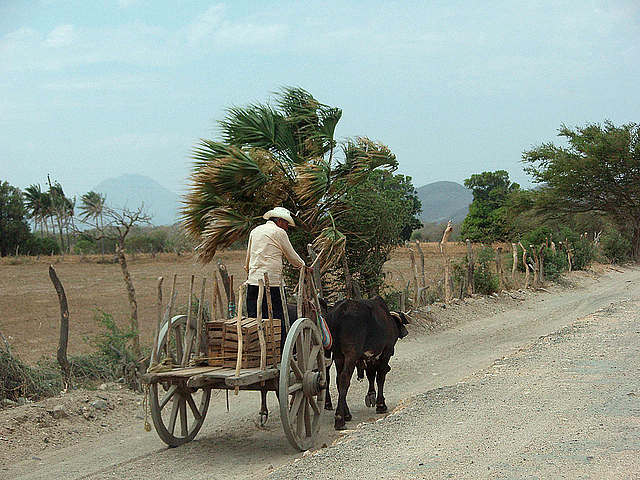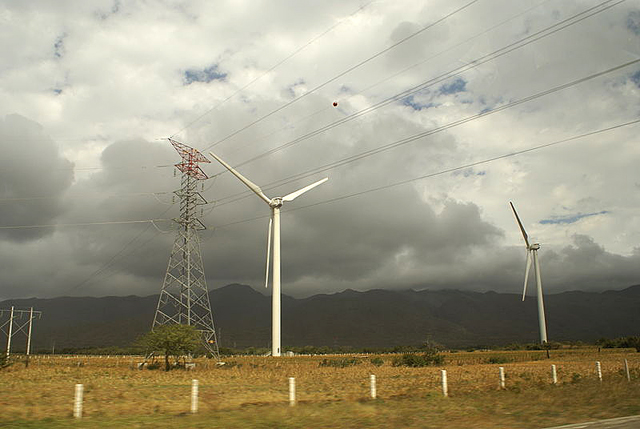Wind development firms have erected many large turbines in Mexico’s Oaxaca state, arousing a lot of opposition among Zapotec communities impacted by them. The news website AlterNet.org last week published a report critiquing the growing development of wind energy in southern Mexico and updating news stories from 2012 about Zapotec protests against them.

The journalist writing for AlterNet, Meg Wilcox, pointed out that the Isthmus of Tehuantepec, where the wind parks have been built, has a unique wind tunnel effect. The mountain ranges on the isthmus funnel the winds across the country from coast to coast, 120 miles (193 km.), at speeds of 37 miles per hour (60 km/hour).
These conditions have prompted the development of several dozen wind parks in the area already, and many more are being considered. One cluster of wind projects north of the Zapotec city of Juchitán, Wilcox writes, includes literally hundreds of turbines, which have been built along a highway, towering above farm fields, homes, schools and the road itself.

The Zapotec and the other indigenous peoples of the isthmus do not appreciate the fact that they get very little benefit from the wind plants. They may be employed when the turbines are under construction, but once they are operating, the people have only a few jobs, such as cleaning offices or removing dead birds killed by the spinning blades.
The indigenous communities express concerns about the killing of birds, but they also are worried about the loss of productive farmlands to the developments. In addition, people worry about harm to their groundwater flows. They feel that the contracts are often negotiated in bad faith, and the fact that a lot of the land is owned communally poses difficulties.

An indigenous rights group that opposes the exploitation, la Unión de Comunidades Indígenas de la Zona Norte del Istmo de Tehuantepec (UCIZONI), is disturbed that the electricity generated in their communities does not benefit the people living there. Huge transmission towers carry the energy out of the Isthmus, to markets farther north.
One of the major issues for the Zapotec is thus the perceived lack of equity—that the industry benefits, that huge corporations benefit, that the U.S. benefits, but that the local people are ignored. Wilcox writes that local landowners are paid from 0.25 to 1.53 percent of the gross income produced by turbines on their lands. In contrast, landowners in Europe and the U.S. are typically paid 1 to 5 percent of the gross income.

The writer indicates that companies like Cemex, Heineken, and Walmart have signed power purchase agreements with the Mexican Federal Electricity Commission (CFE) and the wind developers. Walmart and the others can then trumpet their commitments to using green, renewable energy. CFE and the U.S. Agency for International Development are formulating plans to build infrastructure that will permit the energy to be exported to Texas.
The concerns of the Zapotec in all of this appear to be ignored. Wilcox goes on in her article to suggest sweeping ways of reforming the system, so that the development of cleaner energy sources does not ignore the needs of poor, indigenous communities.